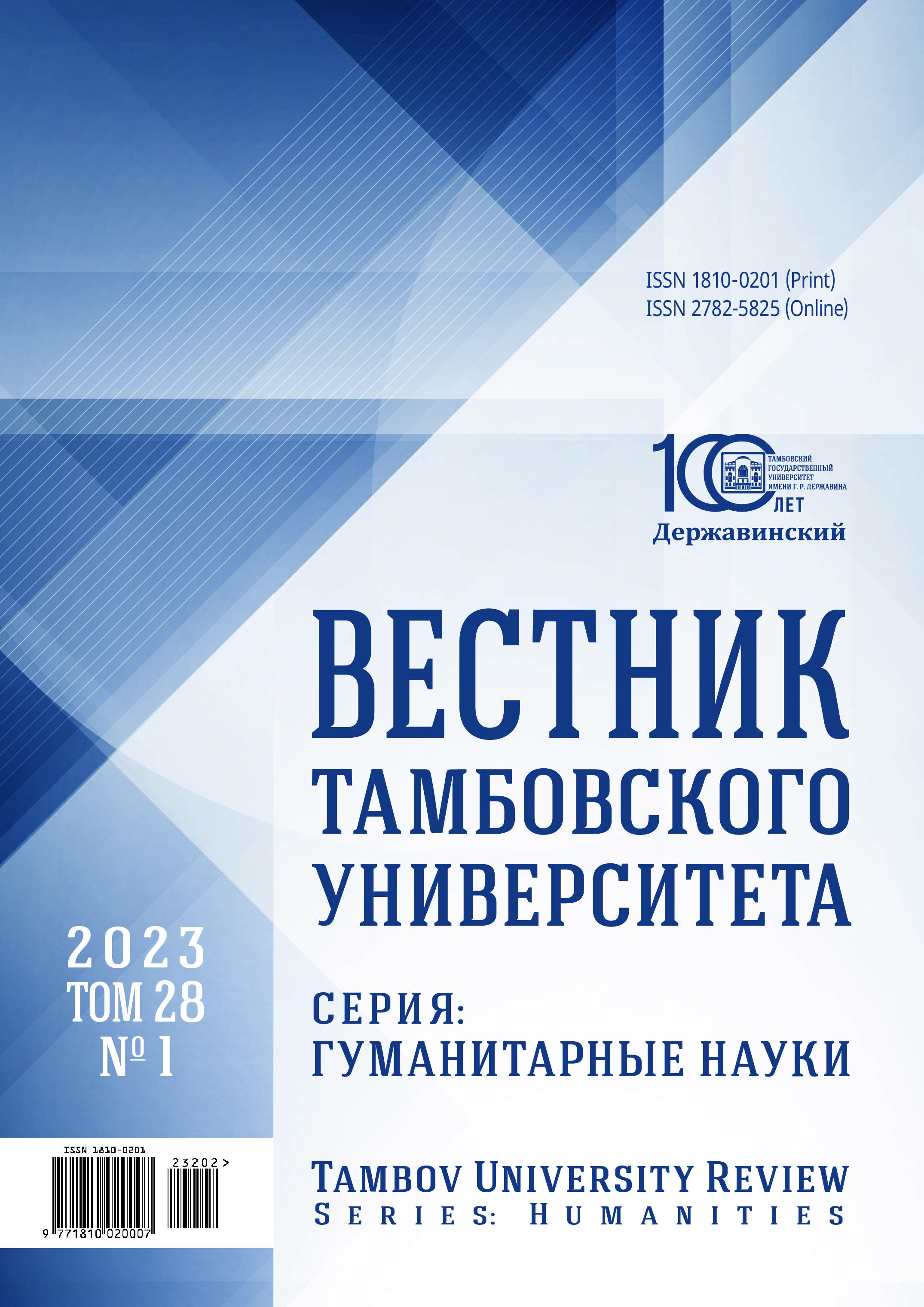Didactic-methodic and psychological features of the use of video materials in teaching a foreign language
- 作者: Zamkovaya A.V.1
-
隶属关系:
- Lomonosov Moscow State University
- 期: 卷 28, 编号 1 (2023)
- 页面: 89-102
- 栏目: THEORY AND METHODS OF FOREIGN LANGUAGE TEACHING
- URL: https://journal-vniispk.ru/1810-0201/article/view/297903
- DOI: https://doi.org/10.20310/1810-0201-2023-28-1-89-102
- ID: 297903
如何引用文章
全文:
详细
Modern technology is expanding the possibilities of classes and determining the need for new forms of learning. The study of multimedia technology is currently developing in an academic way. Visuals in general play a huge, sometimes decisive role in digital communication. The article is devoted to the usage of video materials in the foreign language classes, the author considers the methods of video resources usage in the process of teaching foreign languages, aimed at forming communicative competence of the students. The author analyses psycho-didactic possibilities of audiovisual teaching materials. Particular attention is paid to the peculiarities of clip thinking, the level of visual literacy and the typology of video resources for teaching foreign languages. The aim of the article is to develop a methodology of applying teaching and authentic video resources in the process of foreign language teaching aimed at forming audiovisual literacy and communicative competence of students. The author concludes that the rational use of video materials and video resources contributes to a deeper involvement of students in learning a foreign language, stimulates the development of creative thinking, social skills, contributes to the mastery of knowledge, skills and abilities of understanding, speaking and writing.
作者简介
A. Zamkovaya
Lomonosov Moscow State University
编辑信件的主要联系方式.
Email: learnteachweb@gmail.com
ORCID iD: 0000-0003-0732-0894
Lecturer of Theory of Teaching Foreign Languages Department
1 Leninskiye Gory, Moscow, 119991, Russian Federation参考
- Panferova E.Yu. (2019). The issue of using authentic materials for the development of foreign language communicative competence. Baltiiskii gumanitarnyi zhurnal = Baltic Humanitarian Journal, vol. 8, no, 3 (28), pp. 118-122. (In Russ.) https://doi.org/10.26140/bgz3-2019-0803-0029, https://elibrary.ru/khtdut
- Grigoreva E.N., Abramova A.G., Guryanova T.Yu. (2021). Teaching a dialogue at English lessons in school. Vestnik Chuvashskogo gosudarstvennogo pedagogicheskogo universiteta im. I.Ya. Yakovleva = I. Yakovlev Chuvash State Pedagogical University Bulletin, no. 1 (110), pp. 112-119. (In Russ.) https://doi.org/10.37972/chgpu.2021.110.1.014, https://elibrary.ru/yznhxt
- Begunova Ya.A. (2014). Advantages of video usage while forming English speaking skills of students of the faculty of foreign languages. Yaroslavskii pedagogicheskii vestnik = Yaroslavl Pedagogical Bulletin, vol. 2, no. 3, pp. 131-134. (In Russ.) https://elibrary.ru/strhej
- Bryzgalina E.D. (2018). Audiovisual language education in the era of cross media technologies. In: T.G. Galak-tionova, E.I. Kazakova, V.E. Pugach. (eds.). Sbornik nauchnykh statei po itogam Vserossiiskoi nauchno-prakticheskoi konferentsii goda «Filologicheskoe obrazovanie v usloviyakh elektronno-tsifrovoi sredy» [Collection of Scientific Articles Based on the Results of the All-Russian Scientific and Practical Conference of the Year “Philological Education in an Electronic and Digital Environment”]. St. Petersburg, LEMA Publ., pp. 28-30. (In Russ.) https://elibrary.ru/vstpym
- Budnik A.S. (2012). Development of intercultural communicative competence of high school pupils with audio-visual tools. Izvestiya rossiiskogo gosudarstvennogo pedagogicheskogo universiteta im. A.I. Gertsena = Izvestia: Herzen University Journal of Humanities & Sciences, no. 150, pp. 232-235. (In Russ.) https://elibrary.ru/ozqfwh
- Baryshnikov N.V., Zhoglina G.G. (1998). Ispol’zovanie autentichnykh videodokumentov v professional’noi podgotovke uchitelei inostrannogo yazyka [The use of authentic video documents in the professional training of foreign language teachers]. Inostrannye yazyki v shkole = Foreign Languages at School, no. 4, pp. 88-92. (In Russ.) https://elibrary.ru/tifikt
- Syrina T.A. (2016). Kognitivnaya vizualizatsiya: sushchnost’ ponyatiya i ego rol' v obuchenii yazyku [Cognitive visualization: the essence of the concept and its role in language teaching]. Vestnik Tomskogo gosu-darstvennogo pedagogicheskogo universiteta = Tomsk State Pedagogical University Bulletin, no 7 (172), pp. 81-85. (In Russ.) https://elibrary.ru/wdhkbb
- Bugreeva A.S. (2017). The topicality of audiovisual internet resources use in the process of teaching foreign language in non-linguistic universities. Filologicheskie nauki. Voprosy teorii i praktiki = Philology. Theory & Practice, no. 3-3 (69), pp. 199-201. (In Russ.) https://elibrary.ru/ygybzj
- Safonova V.V., Bazina N.V. (2014). Metodicheskie printsipy otbora autentichnykh videofil’mov dlya ucheb-nykh tselei [Methodological principles of selection of authentic videos for educational purposes]. Inostrannye yazyki v shkole = Foreign Languages at School, no. 7, pp. 3-10. (In Russ.) https://elib-rary.ru/sitazt
- Medvedenko N.V. (2011). Frame as a basic definition of pedagogical tecnologies Sibirskii pedagogicheskii zhurnal = Siberian Pedagogical Journal, no. 1, pp. 102-107. (In Russ.) https://elibrary.ru/pdtsmh
- Zabolotskaya A.R., Madyakina N.Yu. (2018). Yazykovaya dogadka i ee formirovanie u studentov neyazyko-vykh spetsial’nostei [Language guess and its formation among students of non-linguistic specialties]. Kazanskii lingvisticheskii zhurnal = Kazan Linguistic Journal, vol. 1, no. 2, pp. 99-109. (In Russ.) https://elib-rary.ru/gvswqu
补充文件









